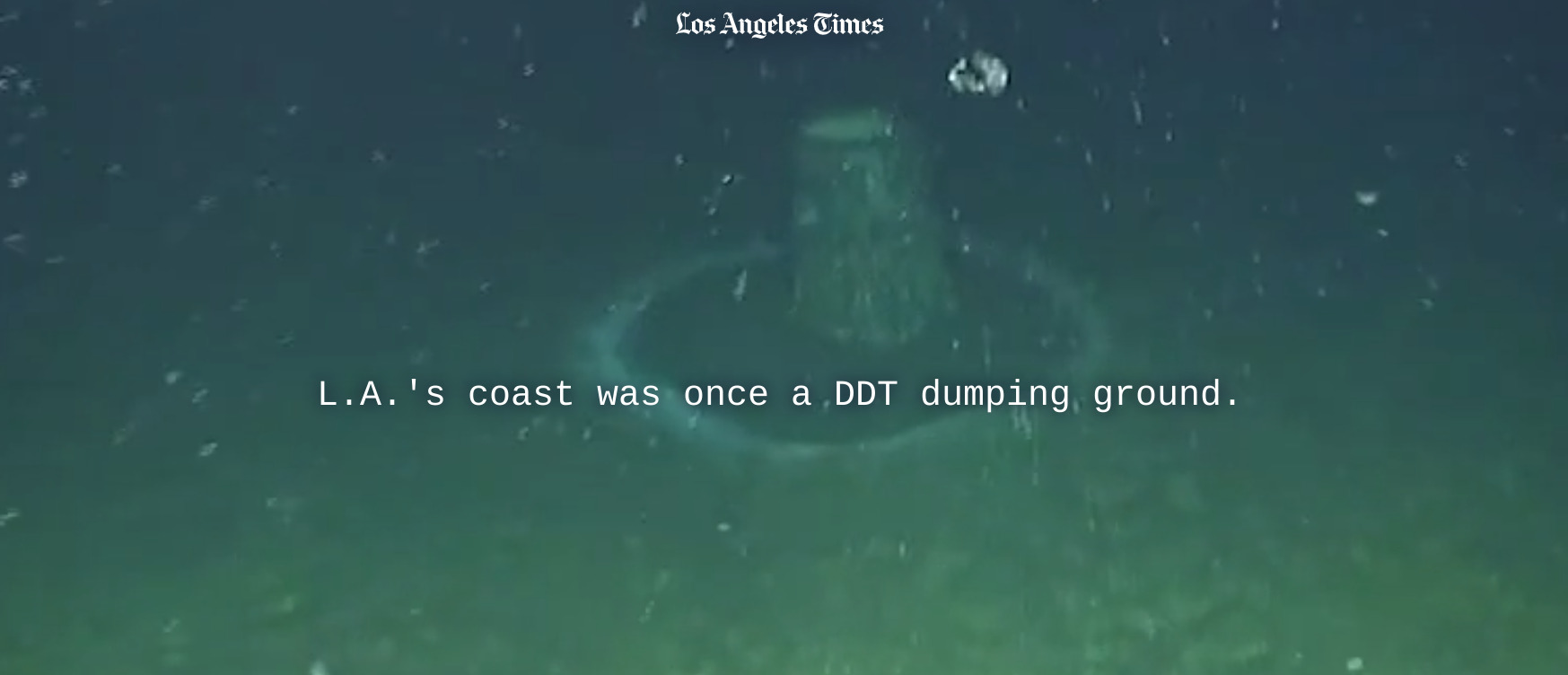DDT Dumping near Catalina: Q&A with Shelley Luce

Heal the Bay’s Communications team sat down with Shelley Luce, Heal the Bay CEO and discussed her reaction to the in-depth story in the Los Angeles Times uncovering DDT dumping near Catalina that happened more than three decades ago.
What is your reaction to the recent LA Times article on DDT pollution in the Bay?
I am shocked. We know about the superfund site off of Palos Verdes. We worked on the scientific and legal investigations in the 1980s and 1990s. We supported U.S. and state agencies in their lawsuit against Montrose Chemical Corporation and three other companies, which was finally settled in 2001. Heal the Bay helped create the Angler Outreach Program to inform local subsistence anglers about the toxic waste that contaminates the fish they are catching to feed their families.
But these thousands of barrels of DDT dumped near Catalina were not part of the discussion.
It took years to negotiate the cleanup requirements for the Palos Verdes site. It’s just unfathomable the Environmental Protection Agency (EPA), Department of Justice (DOJ), and the State Water Board all knew about the additional contamination and did not make that part of the cleanup and mitigation requirements.
The impacts of half a million barrels of leaking DDT are far-reaching.
DDT is an especially devastating chemical because it never goes away. It gets into ocean animals and concentrates as it moves up the food chain. It harms untold numbers of fish, marine mammals, and birds, as well as people in especially vulnerable communities – people fishing to feed their families.
And in this time of climate change, this DDT dumped in the waters off Catalina is yet another blow to our ocean. Oceans are already stressed from warming and acidification, as well as overfishing and pollution from products like plastics, that never biodegrade or leave the environment.
How can we hold polluters accountable?
It’s so hard. Sometimes as nonprofits we have to fight unethical corporations and our own governments. Today we’re talking about DDT from Montrose Chemical Corporation. Last month we saw Exide Technologies, Inc. was allowed to walk away from the toxic lead and arsenic mess they created for three decades near 110,000+ residents in East LA, Boyle Heights, Commerce, Bell Gardens, Vernon, Cudahy, Maywood, Bell, and Huntington. 1 Support East Yard Communities for Environmental Justice in the fight to hold Exide accountable.
Corporations can leave. Government officials can leave. But our communities stay.
This DDT was dumped decades ago and a settlement for a portion of the pollution was already reached. Now we will fight again to hold these polluters accountable. We will start by asking the EPA, DOJ, Coastal Commission, and the State Water Board what jurisdiction they have to bring further claims against the parties responsible for the DDT dumping, and by collaborating with agencies who show they want to fix this problem. We demand solutions and will take action to reach them.
What more needs to be done to protect communities and habitats?
In addition to legal action, here are three things we must do:
- We need a lot more education for people who rely on fish they catch to feed their families. Heal the Bay’s Angler Outreach Program is the model: we reach the most vulnerable people, in their own languages, and in places where they feel comfortable receiving this information.
- We need more frequent and extensive monitoring of sediment and fish, to track contamination that can harm animals and the people who eat them. Every five years is not enough; we need detailed assessments to understand what is happening to the DDT that is out there.
- We must find a way to clean up the DDT and PCBs in our ocean. We know the pilot project to cap the Palos Verdes site was not a success, but that does not mean we walk away. The EPA, NOAA, and other agencies must convene the experts who can come up with the next step and the next, until we find a way to deal with this toxic legacy.
Tell us what you think should be done. Contact Us.



